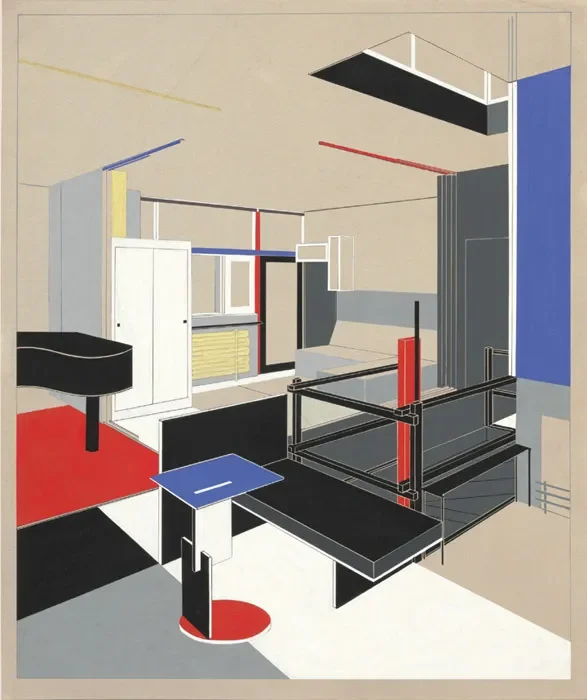gerrit thomas rietveld
1888 - 1964
GERRIT THOMAS RIETFELD
Born in Utrecht on 24 June 1888, Thomas Gerrit Rietveld began his artistic practice in the aftermath of World War One. The war had cost the lives of over 40 million lives, and in the subsequent social, political and economic instability
The trauma of modern warfare shattered previous cultural and artistic conventions, leading to an explosion of new, often modernist, art forms that tried to capture the new reality.
, along with subsequent social and economic instability, reshaped cultural values and artistic movements. In response to the widespread disillusionment, loss, and trauma of World War One, the De Stijl movement emerged – a philosophy based on the teachings of theory of M. H. J Schoenmaekers.
The De Stijl philosophy – or ‘the style’ in Dutch – was a spiritual movement which aimed to find redemption by rejecting the perceived deception of the natural world, aiming to access a deeper, more fundamental meaning and ‘spiritual harmony’. More than an aesthetic pursuit, it rejected the pre-war focus on individualism and the decorative excesses of the Art Deco period, instead focusing on a simplified and universal visual language appropriate for a modern era.
Gerrit Thomas Rietveld (alongside Piet Mondrian and Theo van Doesbur) is considered one the key contributors to this movement. In rejecting naturalistic representation of the world, and instead stripping down to an abstract and geometric style, they believed they could achieve a balance and order that reflected a new, universal consciousness. Within the De Stijl movement only three elements are used – horizontal and vertical lines, three primary colours, and three primary shades of black grey and white.
Rietveld soon became one of the most distinguished interpreters of the De Stijl message. Using his unique skills as both an artist and craftsmen, Rietveld began re-inventing chairs and other furniture as if no one had ever built them before. Among his most important furniture design works that perfectly reflec the De Stijl philosophy are the “Red and Blue” (1918), the “Zig-Zag” (1934), the “Schröder 1” (1923), the “Utrecht” (1935)
Gerrit Rietveld's main Italian collaboration was with the Italian furniture manufacturer Cassina in the 1970 allowed for the industrial production of Rietveld's modernist furniture. The partnership resulted in Cassina producing a range of Rietveld's work, often with Italian manufacturing techniques and high-quality materials, and continues to this day with modern re-editions of his classic pieces.
KEY DESIGNS:
Lexikon 80: (1948): A flagship office typewriter that became an industry leader.
Lettera 22: (1950): Designed by Marcello Nizzoli, this portable typewriter won the Compasso d'Oro and is in MoMA's permanent collection.
Valentine: (1969): A colorful and portable typewriter designed by Ettore Sottsass and Perry A. King.Elea 9003: (1959): Olivetti's first transistorised electronic computer.
Divisumma: (1948): One of the first electric calculators
Programma 101 (1964) with the unveiling of the
Prodest PC 128: (1987): A significant personal computer from Olivetti.
Echos: (c. 1996): A popular line of laptop computers..





